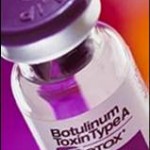
BOTOX cosmetic and Botulinum Toxin Type A is manufactured by only one proprietary provider, Allergan out of Irvine, California. It has been 18 years since it was initially approved for the treatment of blepharospasm (excessive eyelid twitching) and 6 years since its approval for the cosmetic treatment of the vertical lines between the brows. While accurate numbers are impossible to know, tens of millions of cosmetic patients have been treated around the world with the manufacturer reporting more than 13 million doses given in the United States alone since 2002. According to the American Society of Plastic Surgery, BOTOX cosmetic is the most commonly performed cosmetic procedure performed in the United States with over 3 million doses administered in 2006. These large patient numbers, combined with thousands of patients enrolled in various studies and over 3,000 published medical articles on the subject, provide a wealth of safety information. Despite the large amount of doses administered, significant adverse reactions to the use of BOTOX cosmetic is extremely rare. I personally have never experienced any complications with its use, except for a few minor short-lived headaches after an injection session, since I have been treating patients with it. In addition, to date there has never been a single reported death associated with its use.
These cosmetic experiences must be contrasted with the media reports where its use was in the treatment of limb spasticity, which is not an FDA-approved application. In these neuromuscular uses, substantially larger doses (up to 100 times) are given compared to cosmetic doses and are injected in patients who are often ill and weakened from their disease. There simply is not a correlation between these two patient populations. The FDA clearly recognizes these differences and has issued no cessation of its uses to any health care provider at the present time for any of its approved indications. While no drug is ever completely without some complications, and all drugs will experience some complications if given in a high enough amount, the low doses used in the cosmetic patient are completely safe.
The accurate portrayal of the safety data on BOTOX cosmetic should provide great comfort to those patients who regularly receive aesthetic treatments or to those considering it in the near future.
Dr Barry Eppley
Indianapolis, Indiana


